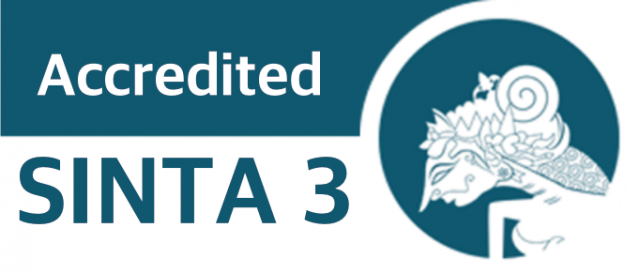Sakralitas Tua dalam Ritus Sae Toi Sanu Se’at etnik Amanuban Tengah, Nusa Tenggara Timur
Abstract
The purpose of this study was to analyze the meaning of Tua sacrality in the rite sae toi sanu sa'et Tua is an ethnic term Amanuban used for local drinks containing alcohol. Elderly becomes a crucial issue in the midst of society and often causes controversy from various parties who generally want to destroy old people. On the other hand, old people become sacred in the Sae Toi Sanu ritual of the Middle Amanuban ethnic group because it is a symbol of the implementation of traditional rituals. This research uses qualitative research methods with interview, observation, documentary studies and literature. An examination of the results of research using the theory of sacrality found that sacredity appears when old becomes an inseparable part of the ritual of sae toi sanu se'at, where men are prohibited from drinking old age. In addition, the old meaning is interpreted as the essence of Middle Amanuban ethnic men who are ready to provide for girls means that men have carried out the command of uis oe while at the same time having the hope that it will continue to bless by providing welfare, health, justice, fertility and prosperity for Middle Amanuban ethnicity. Uis Oe is one of the dea on earth which is believed to provide welfare, health, justice, fertility and prosperity for ethnic groups.
Keywords
Full Text:
PDFReferences
Banoet, R.S.C. (2020). Model Pendampingan Ritual Fua Tulu di Gereja Sesawi Oekamusa. Anthropost: Jurnal Antropologi sosial, dan Budaya, 6(1): 101-110
Douglas, M, (2003). Collected Worksvolume X: Constructive Drinking, London and New York: Routledge.
Durkheim, E, (1995).The Elementary of Religious Life: A New Translation by Karen E. Fields. New York: the Free Press.
Durkheim, E, (2011). The elementary Forms The Religious Life: Bentuk-bentuk Agama yang Paling Dasar (Terjemahan). Yogyakarta: IrCiSod
Handbook, H.G. & Nordholt, S, (1966).The Political System of The Atoni of Timor
Lette, A.R, (2016). Perilaku Minum Sopi pada Remaja di Kecamatan Maulafa, Kota Kupang, Berita Kedokteran Masyarakat 7 (32): 242-250.
Creswell, J.W., (2016). Research Design : Pendekatan Metode Kualitatif, Kuantitatif, dan Campuran. Yogyakarta : Pustaka Pelajar.
Eller, J.D, (2007). Introducing Anthropology of Religion; Culture of the Ultimate, New York: Madison Ave.
Li, D.E,. (2013). Industrialisasi Sopi di NTT yang Berkelanjutan (Toward the sustanability of NTT Sopi). IRGSC no.001
Maula, L.K., & Yuniastuti, A. (2017). Analisis Faktor Yang Mempengaruhi Penyalahgunaan dan Adiksi Alkohol pada Remaja di Kabupaten Pati. Universitas Negeri Semarang: Public Health Perspective Journal. 2 (2): 168-178.
Nuban Timo, E, (2005). Pemberita Firman Pecinta Budaya. Jakarta: BPK Gunung Mulia.
Olson, C, (2011). Religious Studies: key concepts. USA dan Canada: Roudledge
Sayogy, (1994). Kemiskinan dan Pembangunan: Pelajaran dari Empat Studi Kasus Kabupaten di NTT. Jakarta: Yayasan Obor Indonesia.
Sugiyono, (2010). Memahami Penelitian Kualitatif. Bandung: Alfabeta
Tampake, T.C.R., (2017). Perdamaian dan Keadilan: Gerakan Sosial Keagamaan Berorientasi Perdamaian di Poso, penyunting Yusak B. Setyawan, Dkk. Jakarta: BPK Gunung Mulia.
Wearulun, M, & Gulo, Y., (2020). The Special is Women: Suatu Ritual Adat Masuk Minta di Tanimbar Provinsi Maluku. Anthropos: Jurnal Antropologi Sosial dan budaya, 6(1): 66-76.
DOI: https://doi.org/10.24114/antro.v6i2.19444
Article Metrics
Abstract view : 373 timesPDF - 439 times
Refbacks
- There are currently no refbacks.

This work is licensed under a Creative Commons Attribution 4.0 International License

